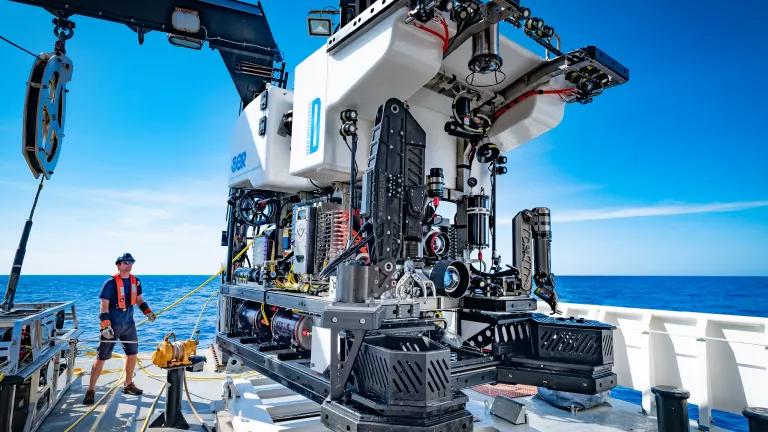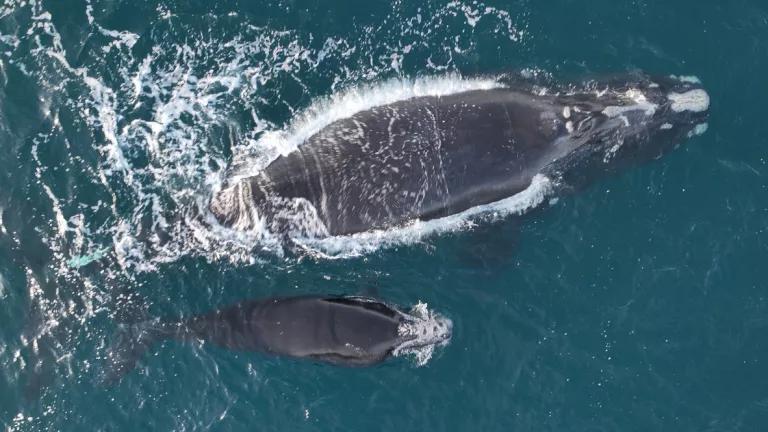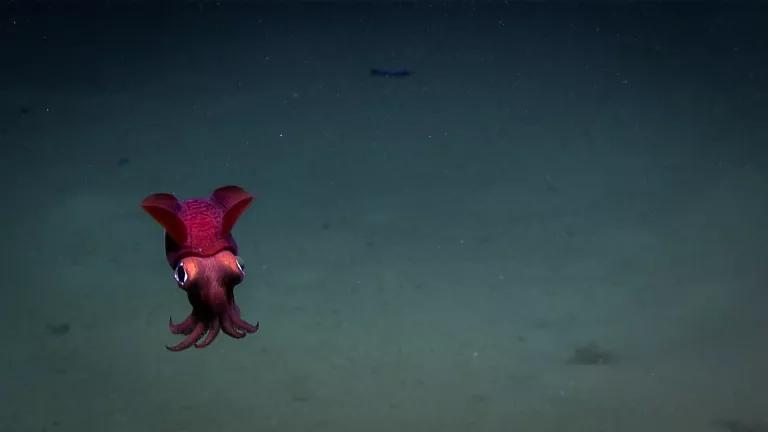Dead Right Whale Confirmed Entangled in Maine Fishing Gear
A juvenile female North Atlantic right whale died from severe entanglement injuries caused by ropes used by the Maine lobster fishery.
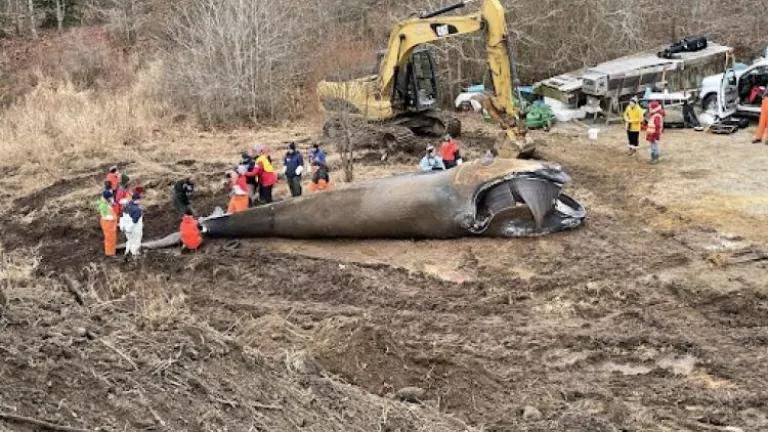
Necropsy (animal autopsy) of North Atlantic right whale #5120 found dead off Martha’s Vineyard on January 28, 2024
NOAA Fisheries. NOAA Fisheries Permit #24539
For years, some representatives of the Maine lobster industry have claimed that its gear has never been linked to a recent death of an endangered North Atlantic right whale. That claim has always been specious and at odds with scientific understanding. It is now clear right whales can and do get entangled in fishing gear in Maine waters.
On the afternoon of January 28, 2024, NOAA Fisheries was notified of a deceased female right whale near Joseph Sylvia State Beach on Martha’s Vineyard. Preliminary observations indicated the presence of rope entangled around, and embedded in, the whale’s tail. Later that day, state law enforcement officials collected samples of the rope and sent to gear experts for examination. NOAA has now concluded that the rope is consistent with that used in Maine state water trap/pot buoy lines.
Scientists soon identified the whale as #5120, based on images showing clear matching features, such as callosity patterns and markings. She was the only known calf of Squila (#3720), born during the 2021 calving season, meaning she was still a juvenile. A necropsy (animal autopsy) was carried out on February 1, 2024. From the necropsy, experts confirmed a chronic entanglement, with rope deeply embedded in the tail, and thin body condition, indicative of feeding difficulty and overall ill health. There were no signs that she had been struck by a vessel. According to NOAA, the full autopsy results will be available in the next few weeks.
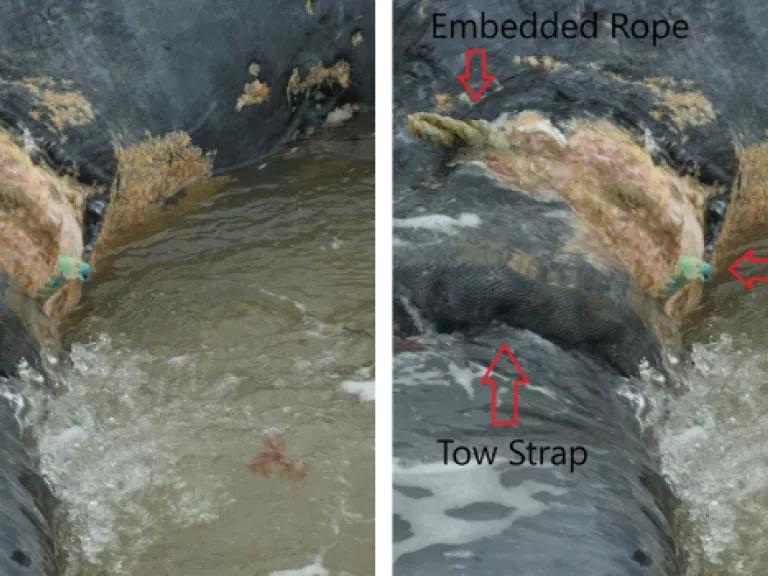
Close up of the tailstock anchored with a black towing strap used to pull the whale out of the surf for further documentation. Above the strap, rope cuts were made by law enforcement officials to remove a portion of the entangling rope for further analysis. Rope is still present, deeply embedded in the wounds on the tailstock.
Woods Hole Oceanographic Institution/Michael Moore NOAA Permit # 24359
North Atlantic right whales commonly occur in Maine waters where they have to navigate approximately 400,000 vertical buoy lines used to mark the location of lobster and crab traps and pots on the seafloor. Every single vertical line poses an entanglement risk to a passing whale. Due to this overlap of whales and fishing gear, scientists have raised the alarm that the number of entanglements likely to be occurring in Maine waters has been significantly underestimated.
Representatives of the Maine lobster industry have, however, long denied any culpability for entanglements of North Atlantic right whales in U.S. waters. While it is true that few entanglements have been definitively traced back to Maine fisheries, this is largely because, until recently, 70 percent of Maine’s waters have been exempted from any requirement that fishing gear be marked with the country and state of origin. It is impossible to trace an entanglement to a fishery in the absence of gear marking.
But the tide recently turned. Regulations issued by the State of Maine in 2020 and by NOAA Fisheries in 2021 brought new gear marking requirements for Northeast lobster and Jonah crab trap pot fisheries in the United States. These requirements now make it feasible to trace an entanglement back to state and federal Maine waters.
Four minke whales and three humpback whales have been traced back to the Maine fishery (state and federal waters) since the gear marking requirements came into effect in 2020. Based on the scientists’ assessment of risk to North Atlantic right whales, it was only a matter of time before they were added to the list.
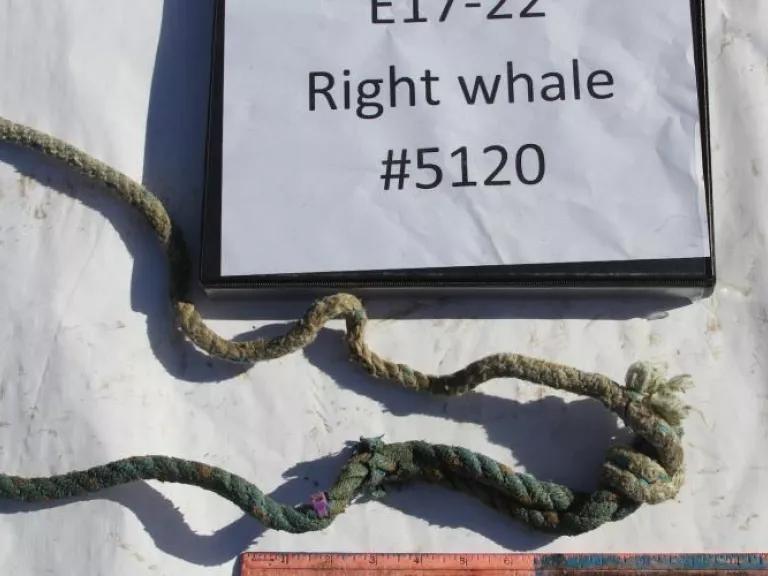
One section of rope with purple zip tie nub that was entangled on North Atlantic right whale #5120
NOAA Fisheries
With fewer than 70 reproductive females remaining in a declining population of about 350 individuals, the entanglement and resulting death of #5120 represents more than a loss of a single whale. As a young female, #5120 had the potential to give birth to multiple calves over her lifetime and would have played a critical role in recovering the species across subsequent generations.
It can sometimes be more comfortable to get caught up in this type of numbers game and overlook the intense pain and suffering that #5120 must have experienced over the last two years. She was first observed entangled in Canadian waters on August 20, 2022, with multiple wraps of line around her tail and flukes, two small buoys at the flukes, and an estimated 200 feet of line trailing behind her. The entanglement was deemed serious because—at only 1 year old—the rope encircling her tail stock would likely tighten as she grew. In January 2023, she was seen entangled in Cape Cod Bay and ultimately unsuccessful attempts were made to disentangle her. #5120 was last seen alive in June 2023, again in Canadian waters. She was feeding with other whales but her overall condition had declined and the wounds from the wraps of rope at the peduncle appeared to be more severe.
The consequences of entanglements are most extreme for female North Atlantic right whales. The significant energetic requirements of undertaking long distance migration while pregnant and later nursing a calf mean that any form of entanglements takes a serious toll. Female right whales are now giving birth to their first calf later in life and only about every 6 to 10 years on average, as opposed to every 3 years in the past. All of these factors stymie the potential for the species to recover.
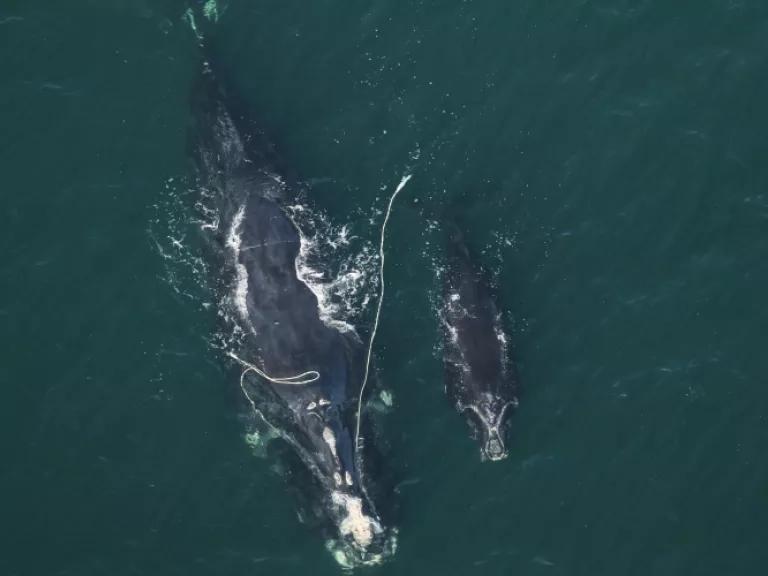
North Atlantic right whale “Snow Cone'' gave birth to her calf while entangled at the end of 2021. She was seen with an additional entanglement around her tailstock in September 2022. She has not been seen since October 2022 and is presumed dead.
Florida Fish and Wildlife Conservation Commission under NOAA permit 20556-01
To protect and recover the North Atlantic right whale and reduce entanglement risk for other whale species, we must significantly invest in transitioning the American lobster and Jonah crab fisheries to ropeless (on-demand) fishing systems in a way that avoids economic burden on fishermen. Ropeless fishing systems will virtually eliminate entanglements while keeping fishermen on the water and in business.
With this new information on the origin of the rope entangling #5120 coming to light, we hope the Maine lobster fishery will begin to participate in good faith efforts to advance the commercial use of ropeless fishing gear.
If you are a seafood consumer, retailer, or buyer, please visit The Future Is Ropeless website to find out how you can help advance ropeless gear.
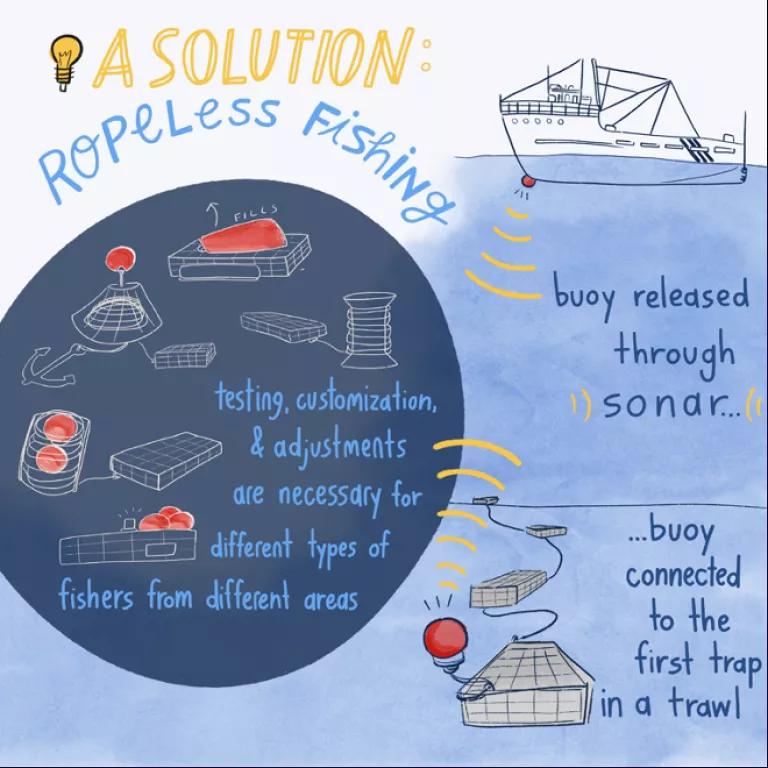
Jessica Russo/NRDC


